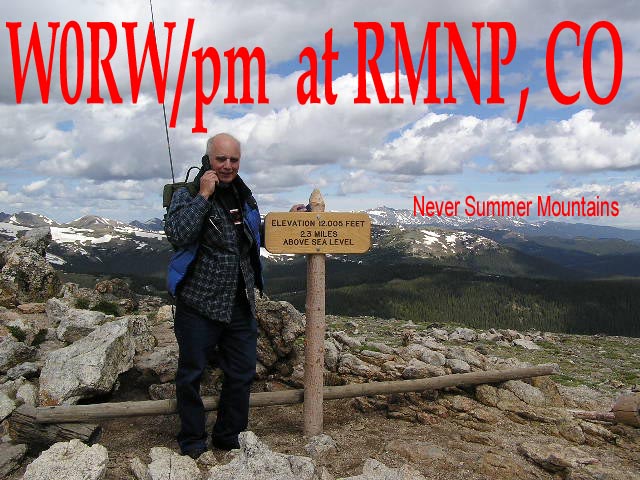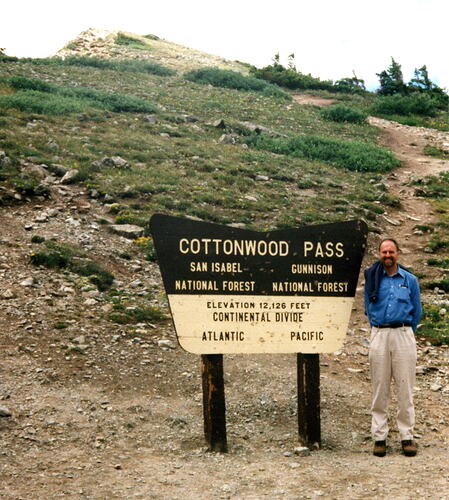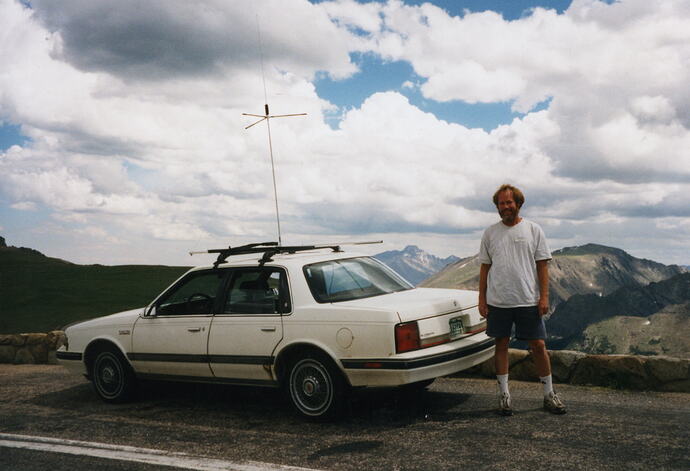The dumbest pedestrian mobile operation i have ever been on was to operate in a snow storm on the Continental Divide. It was a beautiful morning as i drove up Trail Ridge road in the Rocky Mountain National Park (ROMO), Colorado. The billowy clouds from the night before hung in the valleys below me. It was 17 June 2004.
I was hiking along a 12,000 foot ridge, (This was ‘Marmot Point’, 12,005 feet, Not a SOTA site), Just east of the “Never Summer Mountains”.
It was sunny but some low clouds were coming over the divide. A small snow squall came up, I didn’t think this was a problem because the snow was not wet and I was not getting wet. i had just worked W4OSS Kim (sk) in SC, and K8PR Dave in MI on 18157.5 kHz.
i heard some crackling and hissing noises in my handset but no lightning or thunder.
All of a sudden I felt a prickly sparking on my hand from my handset,
I had my conductive ESD shoes on at the time. I could feel tingling in my feet !
I was using my PRC319 with a 10 foot whip with a drag wire.
I removed the whip right away but the precipitation static had hit the antenna.
The antenna tuner has a Victoreen 3KV gas discharge tube across the antenna terminals so i thought i was safe, The radio is also EMP protected, but i found that the tuner would no longer retune the antenna.
Later analysis found that hardware was not damaged but the software in the antenna tuner was disrupted. This made it inoperable, zap, a $3,000 tuner gone.
There was no way to reload the software.
This was long time before there were any surplus replacement tuners on the market.
After that incident I never operate in snow storms at altitude and I always use a shorted stub coax drag wire.
Paul w0rw
Colorado


